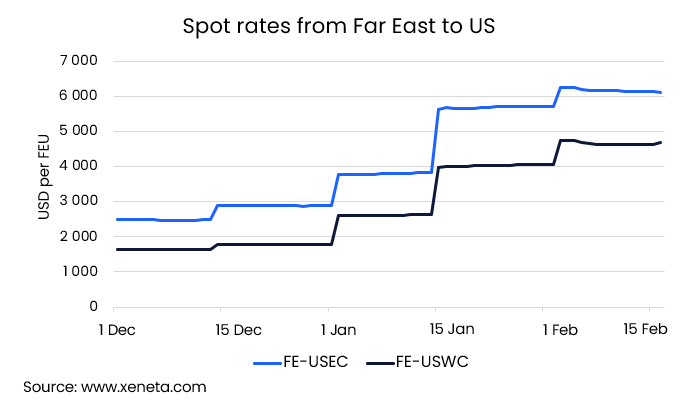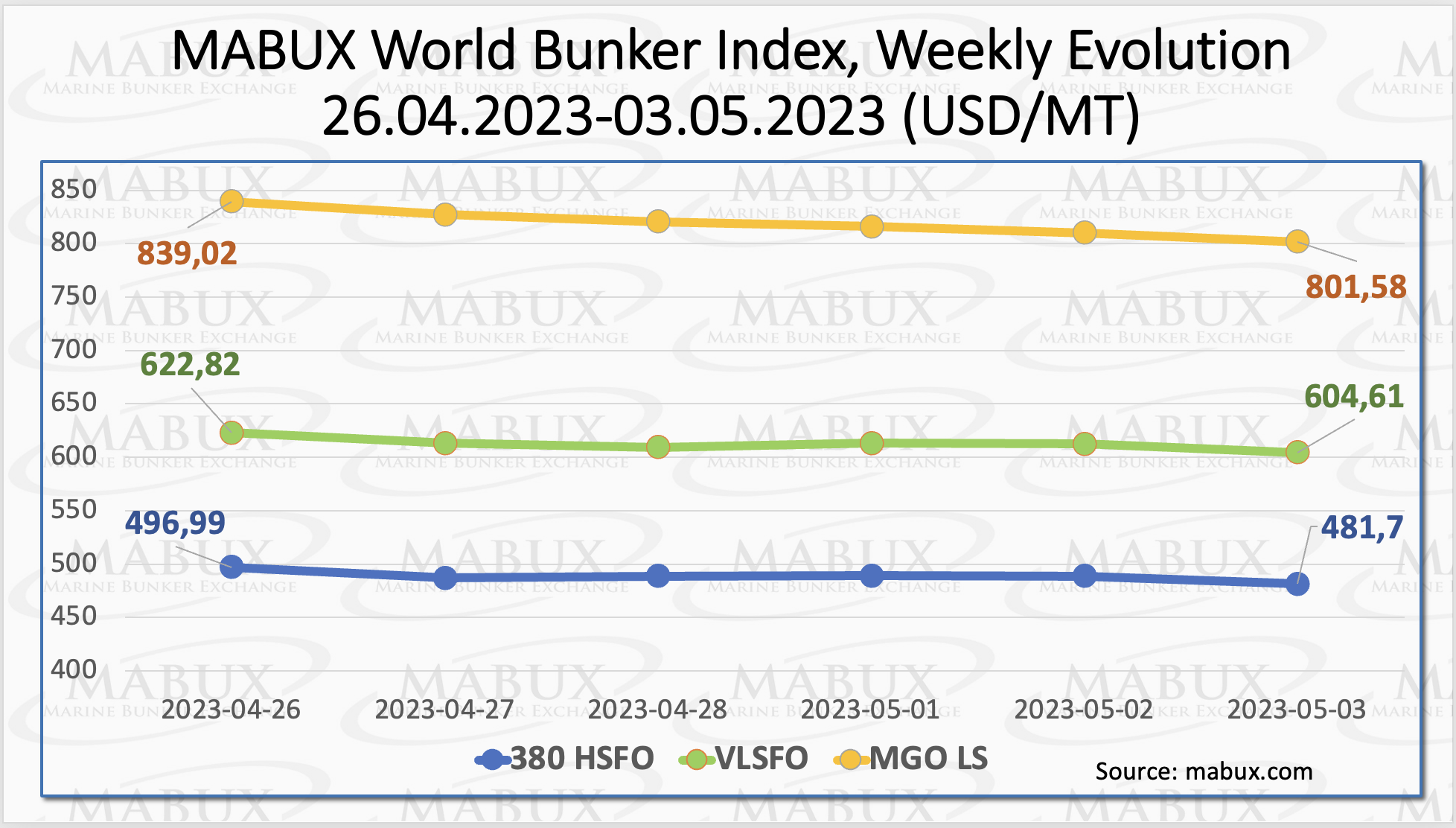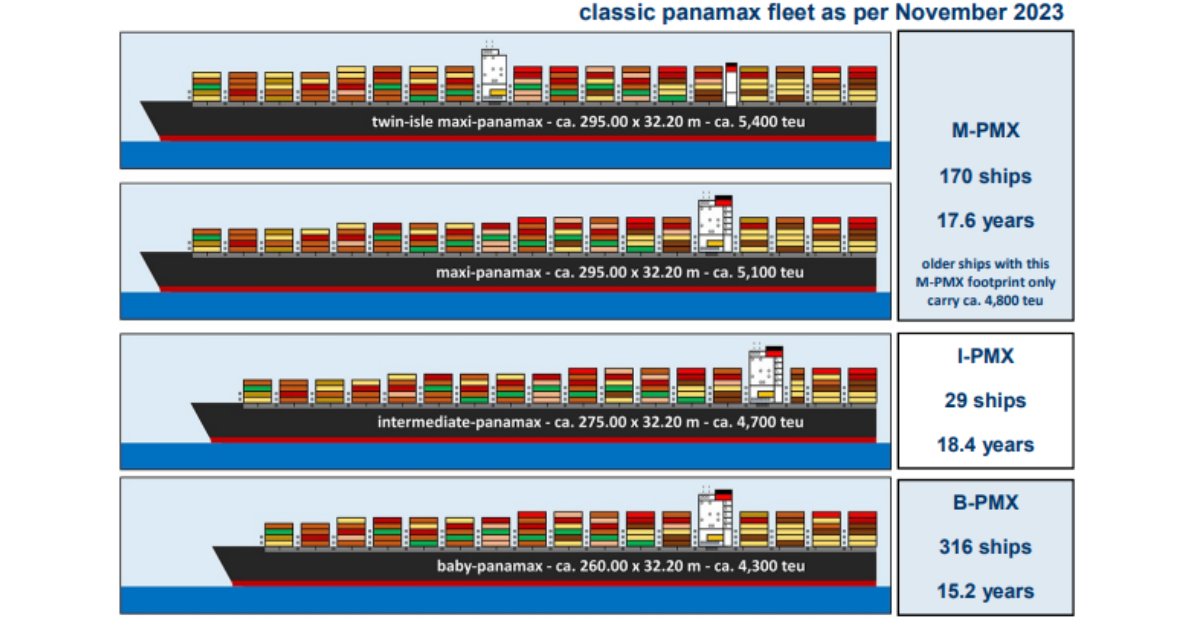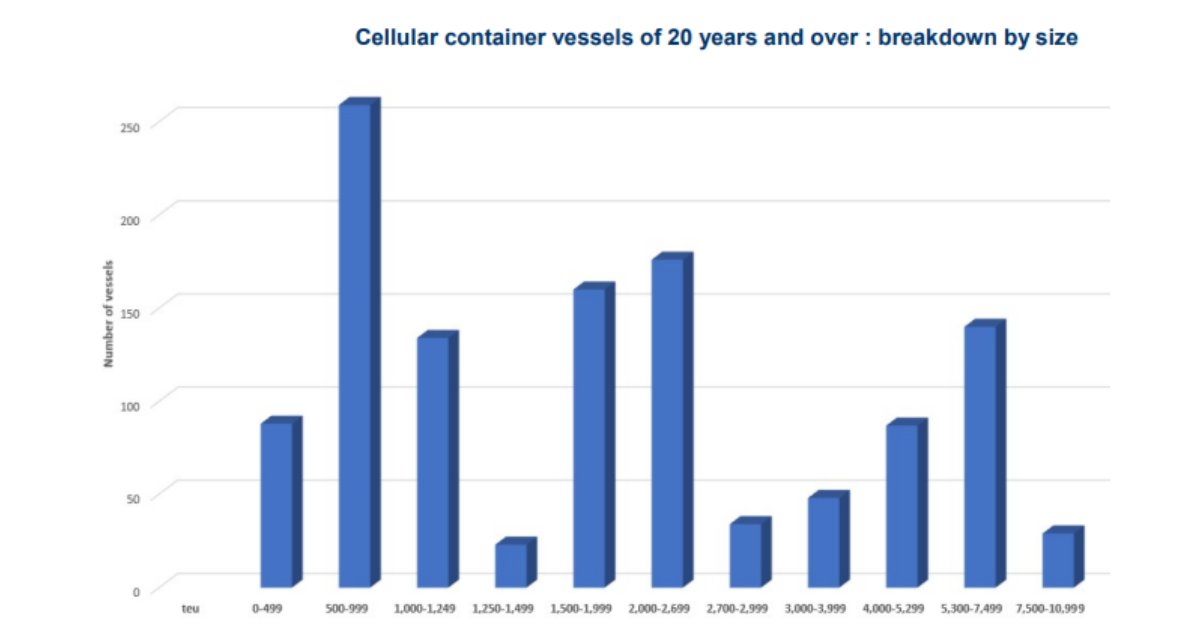

Two weeks after Xeneta reported that ocean freight spot rates from the Far East into Europe may have peaked during the Red Sea crisis it now appears trades into the US have followed suit.
Two weeks is the important timeframe to keep in mind as you read this update because, throughout this crisis, that is how long market movements in ocean freight shipping spot rates from the Far East into US have lagged behind European-bound trades.
For example, on 1 January, spot rates from the Far East into Europe increased by more than 100% in what was the single biggest increase on these trades during the crisis. We then saw trades into the US experience their biggest rise of this crisis 15 days later.

Spot rates from the Far East into the US have softened since the last round of GRIs were implemented at the start of February. Into the US East Coast, rates have fallen slightly from USD 6 260 per FEU on 1 February to USD 6 100 on 15 February. Rates into the West Coast have declined from USD 4730 per FEU to USD 4680 in the same period.
If the US is lagging behind Europe by two weeks then that must mean… yes, you’ve guessed it, spot rates from the Far East into Europe had already reached their peak 14 days earlier when the initial scramble to secure capacity in the run up to Lunar new Year had subsided.
For example, spot rates from the Far East to Mediterranean have fallen by USD 510 per FEU from their peak of USD 6020 on 16 January.
The flattening of spot rates from the Far East into US in the past two weeks follows periods of sharp increases. Despite not being directly affected by the Red Sea crisis (or low water levels in the Panama Canal), spot rates from the Far East to the US West Coast are still 185.9% higher than 1 December 2023.
Rates from the Far East into the US East Coast have increased by a lesser, but still sizeable, 145.2% since 1 December.
With the TPM24 industry summit in early March acting as the starting gun for new contract negotiations with US shippers, carriers will be doing everything in their power to make the latest mid-February GRIs stick.
But, if we use Europe as our crystal ball, they may have a tough time achieving it…
These market movements are also important for those shippers who have the flexibility to import from the Far East into either the US East or West coast. The spread between these trades has risen from USD 850 per FEU at the start of December to USD 1420 per FEU on 15 February, down from a peak of over USD 1650 at the end of January.
The ripple effect of the Red Sea crisis has been felt far and wide with spot rates increasing on trades around the world – and they are all moving with a lag relative to the Far East into Europe trades.
But similarly to the Far East to US trades their potential for further increases seems limited.
Even with the longer sailing distances resulting from the trip around Africa to avoid The Suez Canal, there is still plenty of capacity in the market to meet the additional TEU-mile demand and this appears to be being borne out in the flattening of spot rates on major trades.
If we drill down into the Far East trades a little deeper, there is an interesting development for US imports from Japan and Korea.
For trades into the US East Coast, spot rates from these two countries were over USD 170 per FEU more expensive than trades out of China in early December.
The same is true for imports into the US West, although to a lesser degree. Trades from Japan and Korea were USD 50 per FEU more expensive than rates out of China in early December, but are now USD 315 cheaper.
Source: Xeneta













